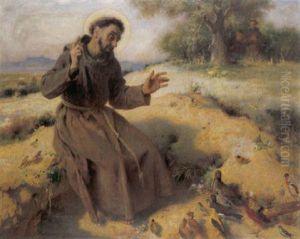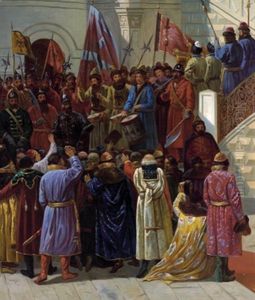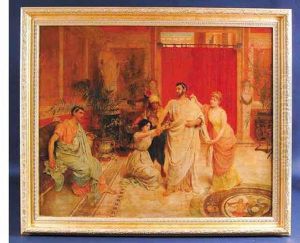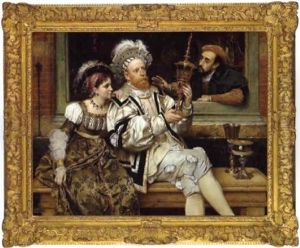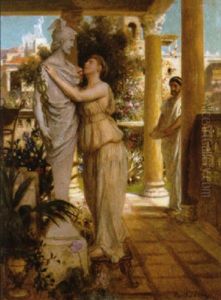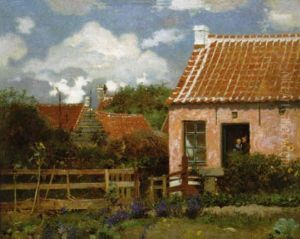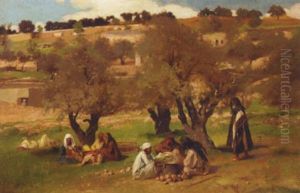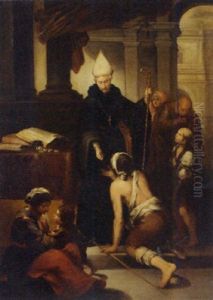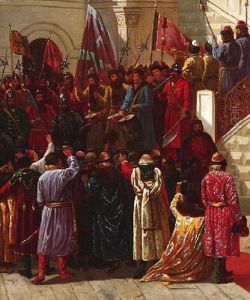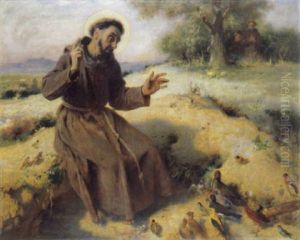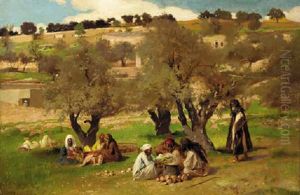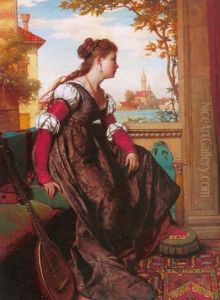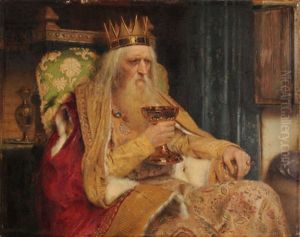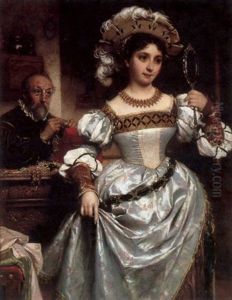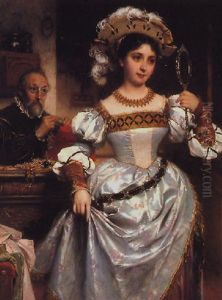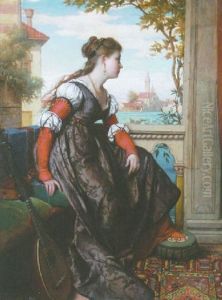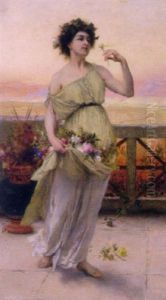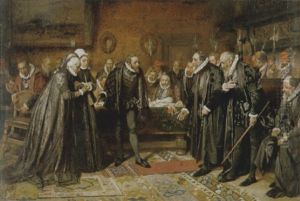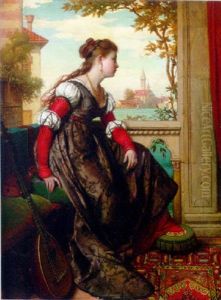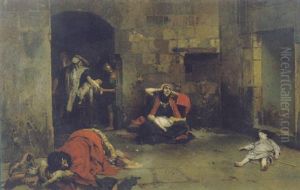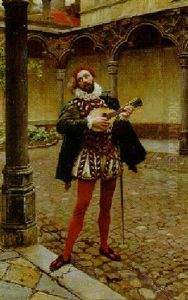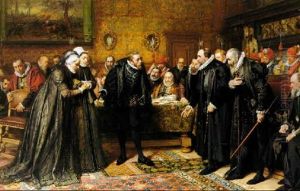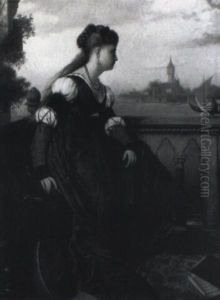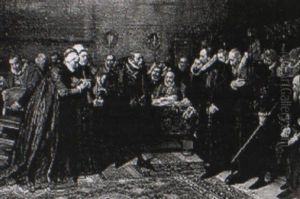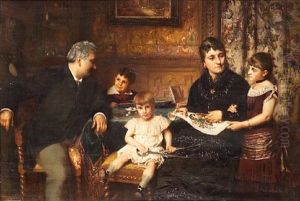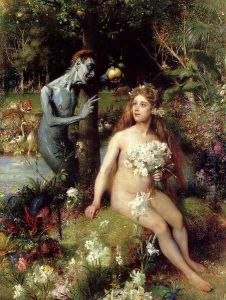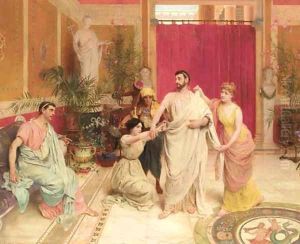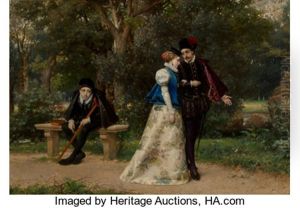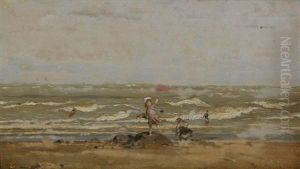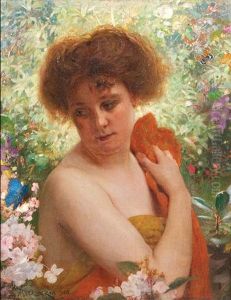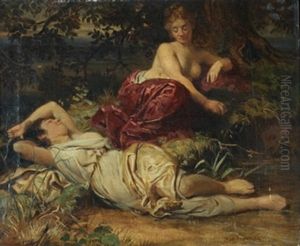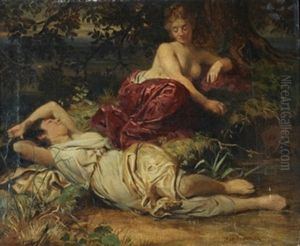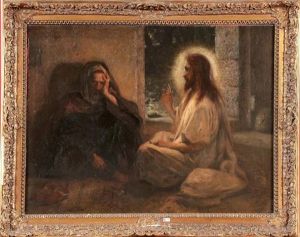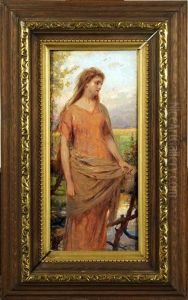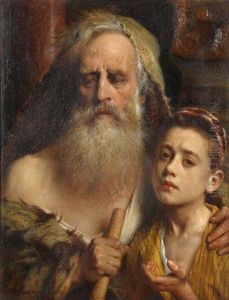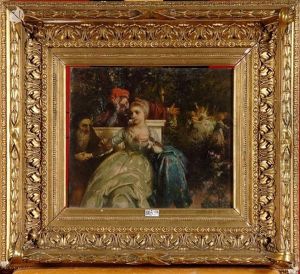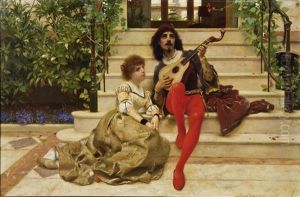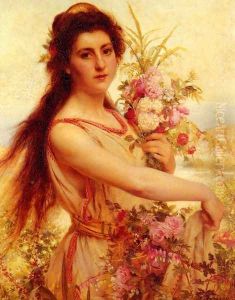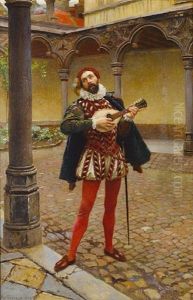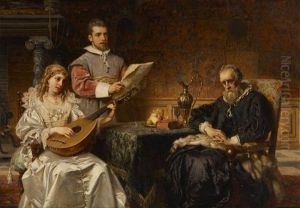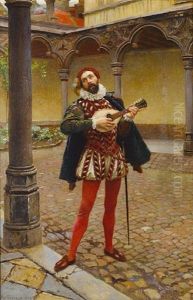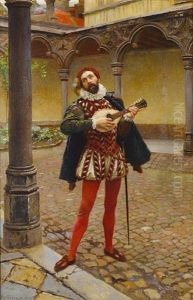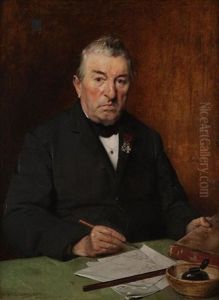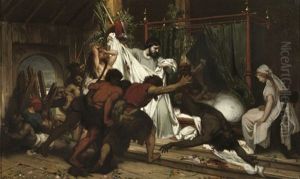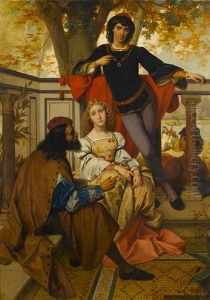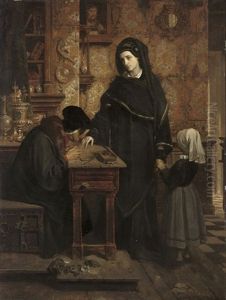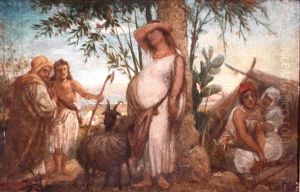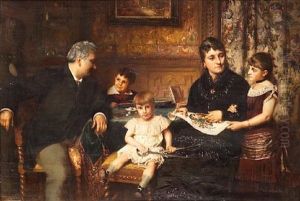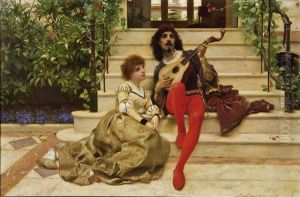Pierre Jan van der Ouderaa Paintings
Pierre Jan van der Ouderaa was a Belgian painter and engraver born on February 13, 1841, in Antwerp. He was a significant figure in the art scene of Belgium during the late 19th and early 20th centuries, known for his historical paintings, portraits, and genre scenes that often included religious or moral themes. Van der Ouderaa received his initial art education at the Royal Academy of Fine Arts in Antwerp, where he studied under notable artists such as Nicaise de Keyser and Joseph Van Lerius.
His academic training provided him with a solid foundation in classical art techniques, which were evident in his meticulously detailed compositions and his adherence to the academic standards of the time. He was a recipient of the prestigious Prix de Rome in 1865, which allowed him to travel to Italy and further his studies. The influence of Italian Renaissance art became a hallmark in his later works, as he incorporated elements of this period into his own style.
Upon his return to Belgium, van der Ouderaa became a professor at the Antwerp Academy, where he taught many students who would go on to become significant artists in their own right. His career was marked by several achievements, including his appointment as a director of the Academy in 1901, a position he held until his death.
Van der Ouderaa's oeuvre is characterized by a blend of realism and romanticism. His historical paintings, in particular, were celebrated for their vivid portrayal of significant moments in history, rendered with a dramatic flair that captured the viewer's imagination. He also painted religious works for various churches, contributing to the rich tradition of ecclesiastical art in Belgium.
He was an active member of the Royal Academy of Science, Letters and Fine Arts of Belgium and received numerous honors for his contribution to the arts. Pierre Jan van der Ouderaa's legacy lives on through his works, which can be found in various museums and collections in Belgium and abroad. He passed away on November 19, 1915, in Antwerp, having left a lasting impact on the Belgian art world.
